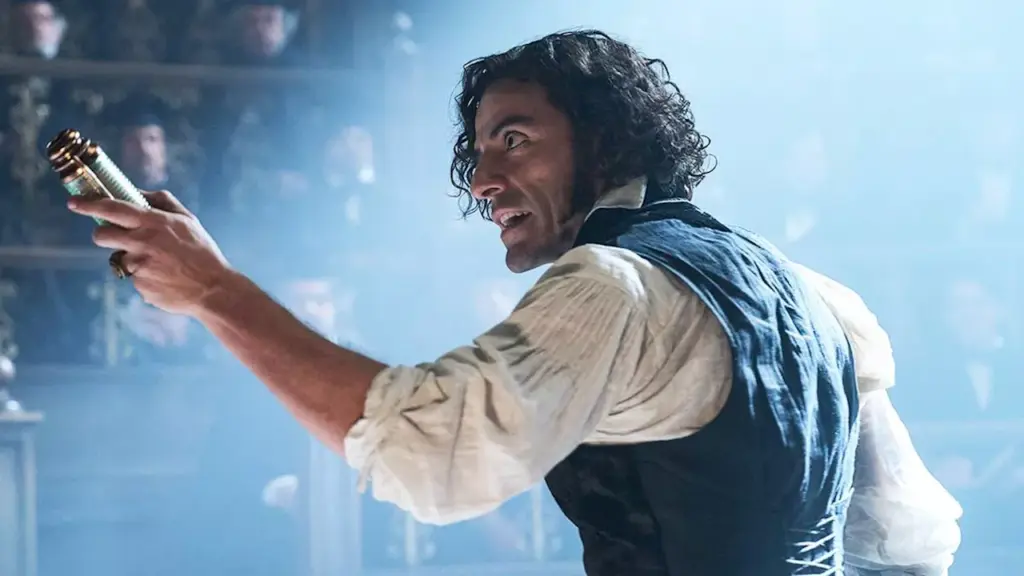
Guillermo del Toro’s adaptation of *Frankenstein* has arrived on Netflix, offering a fresh interpretation of Mary Shelley’s classic novel. Released in early November 2025 after a brief theatrical run, the Gothic horror film brings forth a darker narrative about the consequences of creation and paternal relationships. While del Toro maintains a respect for Shelley’s original themes, significant changes reshape the story for contemporary viewers.
Exploring Victor’s Tragic Backstory
In Shelley’s *Frankenstein*, Victor Frankenstein’s family life is generally portrayed as supportive, particularly through the character of his father, Alphonse. Known for his integrity, Alphonse marries Caroline Beaufort to shield her from poverty and nurtures his children, including Victor. In stark contrast, del Toro’s film features Leopold Frankenstein, played by Charles Dance, as a far less sympathetic character. The emotional turmoil stemming from Leopold’s treatment of Victor positions him as a catalyst for Victor’s descent into monstrosity, highlighting the theme of “the sins of the father.”
Setting the Scene in the Crimean War
Another notable shift is the film’s historical context. While Shelley’s novel is set in the early 19th century, del Toro recontextualizes the story to take place in 1855, amidst the backdrop of the Crimean War. This setting not only provides Victor with a greater number of corpses for his experiments but also places the narrative firmly within the Victorian era. This era is rich with visual and societal influences that resonate with other classic monster stories, such as *Dracula*, allowing del Toro to explore similar themes.
Del Toro introduces a new character, Henrich Harlander, a war profiteer who assists Victor in his experiments. This character is not present in the original novel and adds a different dimension to Victor’s journey, echoing elements of the *Bride of Frankenstein* narrative. Harlander’s role as a benefactor allows for a deeper examination of the moral implications of Victor’s actions, further complicating his motivations.
Several crucial characters from the book are omitted in this adaptation, including Victor’s friend Henry Clerval and his youngest brother, Ernest. The absence of Justine Moritz, who suffers a tragic fate at the hands of the Creature, removes a key moral lesson about the ramifications of Victor’s scientific hubris. Her absence simplifies the narrative, focusing more on Victor’s personal struggles and less on the collateral damage of his creations.
The Creature’s Tragic Arc
A pivotal aspect of Shelley’s novel is the Creature’s relationship with the De Lacey family, which serves as a turning point in his understanding of humanity. In the film, the Creature experiences a similar connection but with a tragic twist. While the old blind man offers kindness to the Creature, he ultimately meets a gruesome end, further intensifying the Creature’s grief and resentment toward Victor.
Del Toro’s film also reimagines Elizabeth, Victor’s love interest. Unlike the novel, where Elizabeth is a stabilizing force in Victor’s life, the film presents her as a more independent character. She is not Victor’s cousin and is instead the niece of Harlander, leading to a different dynamic in their relationship. This shift emphasizes the contrasting worldviews of Victor and Elizabeth, with her fascination with life opposing his obsession with death.
Sympathy for the Creature
Del Toro’s portrayal of the Creature is notably more sympathetic than in the original text. Rather than being a mere embodiment of terror, the Creature is depicted with depth, allowing audiences to connect with his plight. The film portrays him as a victim of circumstance, shaped by the rejection and mistreatment he receives. In a significant departure from the novel, the Creature’s actions are largely driven by self-defense, contrasting sharply with the malicious intent exhibited in Shelley’s narrative.
The climax of del Toro’s adaptation diverges sharply from the original story. In a moment of reconciliation, Victor seeks forgiveness from the Creature, embracing him as a son. This powerful moment of forgiveness stands in stark contrast to the vengeful pursuit depicted in Shelley’s conclusion, where Victor dies consumed by rage and hatred for his creation.
Through these changes, del Toro’s *Frankenstein* invites viewers to reconsider the themes of creation, responsibility, and forgiveness. The adaptation offers a nuanced exploration of the human condition, while still paying homage to the original work that has resonated for over two centuries. As audiences engage with this reimagined tale, they are left to ponder the profound implications of Victor’s choices and the enduring legacy of the Creature.







